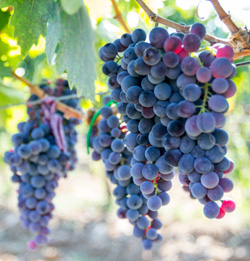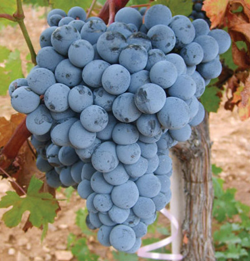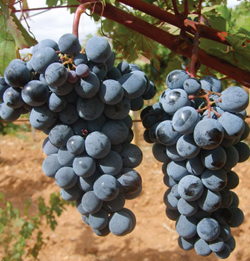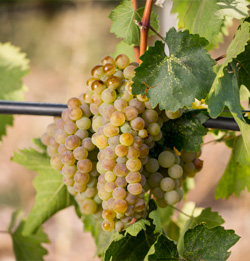DNA studies show that the Eurasian grape, or vitis vinifera, was most likely domesticated in the mountainous Near East extending from the northwestern Zagros Mountains (Iran and Iraq) to the eastern Taurus Mountains (southern Turkey) as early as 7,000 BC.
The first conclusive traces of viticulture and winemaking in Anatolia date back 7,000 years.
For thousands of years, Anatolia, recognized as the birthplace of wine has played a role in the lives of more than twenty-five civilizations that settled on these lands.
There are about 1200 varieties of grapes indigenous to Anatolia. Kalecik Karası, Narince, Öküzgözü and Boğazkere are four of the most well-known Anatolian grapes.

Kalecik Karası (pronounced: Kah-le-djic-car-ah-ser with ‘er’ as in British ‘father’) is an indigenous red grape varietal originating and named after the town of Kalecik, which is 65 km northeast of Ankara in Central Anatolia. The vineyards are at an altitude of 650 meters . Kalecik Karası grapes are mainly cultivated near the Kızılırmak River basin. Because there is a big difference between day and night temperatures, the grapes cultivated in Kalecik have a distinctive taste and aroma.
Origin: Mid-Northern Anatolia
Climate: The 2,000 meter high mountains to the west that surround the Kalecik terrain create a special microclimate. The air hits the mountains as it rises, creating hot weather in the valley and rain in the plains which is a natural resource for the vineyard. The Kızılırmak River also creates a special microclimate in the Kalecik district affording milder weather during the winter months. These climate conditions make Kalecik one of the most important and ideal regions for viniculture in the world.
Soil: Clay and stone
Harvest: Mid-September

Öküzgözü (pronounced: Oh-cooz-goe-zue) is native to Eastern Anatolia. Öküzgözü derives its name from the fact that it has large, blackberries that resemble a bull’s eye. It has fruit and floral flavours, makes a soft and easy to drink wines.
Origin: Mid-Eastern Anatolia (Elazığ)
Climate: The grape prefers cold winters and hot, dry summer seasons. At Elazığ and Malatya, the vineyards are 850-1100 metres high. Euphrates and two dams (Keban and Karakaya) built on it has changed the climate at the region, rendering harsh winters and dry hot summers somewhat mellower.
Soil: Red clay and decomposed granites varying to light chalky clay soils may vary to sandyclay, with underlying limestone.
Harvest: Second half of September.

Boğazkere (pronounced : Bow-aahz-keh-reh) means “throat burner”. Boğazkere has very high dense tannins with medium acidity, similar to Tannat.
Origin: South East Anatolia (Diyarbakır)
Climate: The grape prefers hot and dry climates, and relatively higher altitudes. It is quite resistant to drought.
Soil: Decomposed sandstone to red clays.
Harvest: Middle October.

Narince (pronounced: Nah-rin-djeh meaning ‘delicately’ in Turkish) is a white grape originating from Tokat province in the Black Sea wine growing region.
Origin: Mid-Black Sea Region (Tokat). Primarily cultivated in Tokat along the Yeşilırmak River.
Climate: The climate in Tokat, where the grape originates from, represents a shift in the climate between the Central Black Sea and the Inner Anatolian regions and is somewhat harsher at higher altitudes and in the southern areas of the province.
Soil: The soil is generally sandy-clay and gravelly.
Harvest: Mid-September